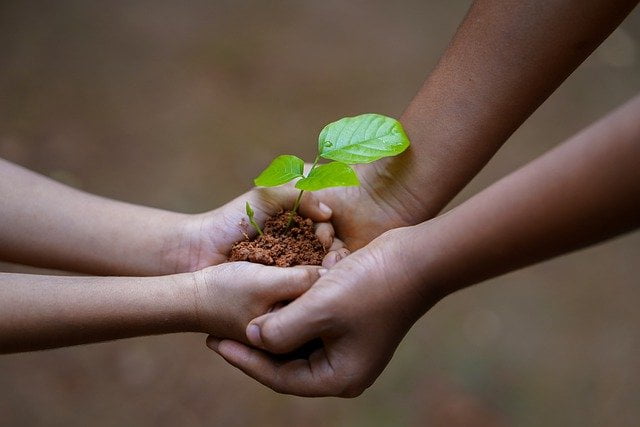- Home
- Types of Addiction
- Pot Addiction Help & Treatment
Pot Addiction Help & Treatment
Cannabis, marijuana, pot, weed, or whichever other form it is addressed by, is not only the most frequently consumed illegal drug in the United Kingdom, but the most frequently consumed illegal drug in the world.
From 2020 to 2021, the United Kingdom saw almost three hundred thousand adults contacting rehab services and addiction specialists, and half of this figure entered treatment in order to overcome drug and alcohol addiction. Out of this figure, the UK Government estimated that around 20% of patients in rehab were addicted to cannabis.
The UK Government also discovered that cannabis, or pot, is the most frequently seized drug by police officers. In the year ending March 2021, 71% of all drug seizures in England and Wales involved cannabis, also known as pot.
There were 168,332 seizures of class B drugs in the United Kingdom during this time, with cannabis accounting for 95% of these seizures. This means that there were a total of 159,209 seizures of cannabis during this time.
It is estimated that the average pot user consumes over 82 grams per year. When a single gram of pot is estimated to cost around £10, the annual expenditure for the average pot user can cost as much as £825 per year.
Some users may only consume pot once a week, on the weekends, for example, whereas those who are more dependent resort to consuming pot almost every day, and their expenditure on the addictive drug will significantly exceed £1,000 annually.
How is Cannabis Addictive?

Cannabis, marijuana, or pot, contains many psychoactive compounds which affect our minds greatly. One of the most notable and addictive psychoactive compounds includes Tetrahydrocannabinol, commonly known as THC.
THC is highly addictive. When someone consumes cannabis, they will experience a great feeling of sensation due to these psychoactive substances such as THC. This is what produces the ‘high’ that is associated with consuming pot or cannabis.
Experiencing this ‘high’, especially over and over, can make someone susceptible to developing a form of cannabis dependence.
People will not become addicted immediately, however, the more frequently and heavily that they consume this substance, the more their brain structures are changed which may lead to psychological and physical dependence on their addictive drug.
When someone is suffering from a cannabis addiction or marijuana addiction, they will experience cravings and discomforting cannabis withdrawal symptoms when they refrain from their substance. This makes being sober difficult, and those who want to quit will find it incredibly difficult to do so because they are suffering from its withdrawal symptoms.
In our brain are reward pathways, and these reward pathways can trigger dopamine release when we achieve something, whether it be completing a bout of exercise, sexual intercourse, eating, finishing a project, speaking to friends, and so on.
However, when we repeatedly consume an addictive substance such as cannabis, we trigger this reward pathway and its dopamine release. Doing it too often consolidates our brain’s need for this addictive substance in order to feel good.
When people develop an addiction, they may struggle to replicate previous and natural levels of dopamine when they completed an activity which pleased them.
This may lead to a range of mental health conditions such as anxiety and depression because they are struggling to replicate these feel-good chemicals such as dopamine in their daily life, without the assistance of cannabis.
The way in which people consume cannabis can make them more susceptible to developing an addiction. For example, smoking is considered to be the most effective way to get ‘high’ from smoking cannabis.
While it may not necessarily be as intense as eating cannabis, it produces an immediate and intense high because THC and other chemicals are directed straight towards the lungs, and into the bloodstream and the brain.
Different Ways To Consume Pot (And How It Affects Dependence)

There are different ways to consume pot, and the different ways can affect how someone develops a pot addiction, otherwise known as cannabis use disorder or marijuana use disorder.
The severity of pot addiction will vary from one person to another, and the ways they consume pot will determine what kind of adverse effects they will experience.
1. Smoking Pot
Cannabis smoking, or pot smoking, is one of the most common forms of pot consumption. Typically, people will hand roll their own cigarettes, and put pot in it, sometimes mixed with tobacco, in order to achieve their high.
When people combine tobacco with their pot in order to smoke it, it is sometimes called a ‘moke’ (which is typically smoked with a bong or water pipe) or a spliff. If someone rolls a cigarette without the presence of tobacco, but only pot, it is often called a ‘blunt’.
There are many differences which will make someone opt for a cigarette which combines both pot and tobacco or a cigarette which is purely made out of pot.
When people smoke a ‘spliff‘ or a ‘moke’, which means that they have combined tobacco with pot, it can cause a greater level of high and euphoria due to the addictive chemicals present in both substances.
In pot, there is a high amount of THC, which is a highly addictive chemical which can increase someone’s level of dependence on a substance. Similarly, there is a high level of THC, among other addictive chemicals in tobacco.
Nicotine can also provide the ‘Nicotine rush’ which is associated with smoking, and with tobacco it can enhance the effects of a high. Combining these two substances will make it very addictive and produce a euphoric and more intensified sensation.
On the other hand, some people may enjoy smoking pot, but not enjoy smoking tobacco. So, they will smoke what is called a ‘blunt’ instead. Studies show that smoking pure cannabis or pot makes it much less likely that the smoker will develop an addiction to smoking pot.
This is because it is thought that pot is considered to be far less addictive than tobacco and nicotine.
Regardless of whether people are smoking pure pot or pot with tobacco, smoking is one of the most effective ways to achieve a high when consuming a drug. This is because when someone is smoking pot, or any substance for that matter, its chemicals (in this case, THC, nicotine, tobacco, or else) are transported from the lungs and into the bloodstream and the brain.
This is why we experience such intense effects so suddenly when we are smoking. And while the effects can be felt within minutes, they can peak after around 30 minutes, and last as long as up to 6 hours after use.
When we experience the effects more profoundly and more quickly, it makes the substance more addictive. Because the effects on the brain are so intense, smokers are more likely to engage in this activity more, and smoke at greater intensities and frequencies in order to replicate the same feelings of euphoria.
However, their tolerance may increase, meaning that they will need to smoke more in order to experience the same effects as before.
2. Eating Pot (Edibles)
People can also eat the cannabis plant through what are called “edibles”. Not only do people smoke pot, but they can also eat it by mixing and baking it with foods such as brownies or cookies, for example.
Some of the most common forms of edible cannabis consumption come through “weed brownies”.
While smoking pot will mean that people can feel its effects for a few seconds to a few minutes, consuming pot through edibles will take much longer for its effects or the ‘high’ to manifest. It can take anywhere from 30 minutes to an hour to experience the euphoria.
When someone eats an edible pot, it has to travel to the stomach and then the liver, which takes longer for the smoking pot to reach the lungs. Once it reaches the liver, then its chemicals can be released into the bloodstream.
While it may take longer for effects to take place, the effects can be much greater than when people smoke it. This is because the liver converts THC into stronger forms. Typically, the effects of eating pot peak at around 4 hours, and can last as long as 12 to 24 hours after use.
While eating pot can remove some of the adverse effects that smoking presents, such as lung damage, lung infections, respiratory illnesses, and so on, it can still present dangers if people consume too much in a short space of time.
Often, people will consume the edible form of a pot and become overzealous. While waiting for the effects to take place, they may become impatient, and consume more than they had originally intended.
This can eventually lead to over-intoxication and more intense symptoms, such as psychosis, hallucinations, anxiety and panic attacks, nausea, vomiting, and more.
3. Vaping Pot
Vaping can be another form of cannabis consumption. Some studies suggest that vaping pot, as well as eating pot, is substantially less harmful to your lungs than smoking.
However, research may be inconclusive due to how recent the development of vaping is. Vaping pot can still mean that people are consuming psychoactive components such as THC, which means it can be just as addictive.
Furthermore, other studies actually show that it can lead to the same kinds of health complications as smoking cigarettes does, such as lung and respiratory infections, anxiety, and more.
Long-Term Problems of Pot Use & Addiction

The symptoms of pot and cannabis consumption are well known. People engage in the consumption of pot in order to experience euphoria, relaxation, reduced stress, and so on.
However, there are many long term symptoms which are heavily disregarded or overlooked when navigating the subject of pot use.
Not only will pot present withdrawal symptoms such as weakness, headaches, sweating, drowsiness, brain fog, and more for those who are dependent, it can lead to a range of long-term physical and psychological problems.
1. Psychological Problems
- Addiction and dependence: One of the most well-known effects of smoking too much or general pot or cannabis consumption will lead to substance use disorder, also referred to as “cannabis abuse”. Consuming too much will lead to drastic changes in the brain, and addicted people will begin experiencing psychological (and physical) cravings for pot.
- Depersonalisation: If someone smokes pot frequently and excessively, they may suffer from something which is called depersonalisation. This is where people begin to feel as if they are outside of their own body, and that they are detached from the world. It is like experiencing an altered form of reality, and not only will this diminish someone’s self-awareness, it can eventually lead to more severe and clinical mental health disorders.
- Alterations in Mood: This could vary from experiencing irritability, mood swings, and aggression, and it can enhance symptoms of bipolar disorder for those who have this condition. Not only will this happen in the short term, but long-term cannabis use can lead to long-term mental problems even when they are not intoxicated. Aspects of our brain, particularly those which are responsible for helping us process our emotions and behaviours, are impaired after prolonged pot consumption. This will lead to a decreased mental state where people are more likely to make decisions with negative outcomes.
- Reduction in Coordination: When someone has been consuming pot for too long, their level of coordination will be significantly reduced when compared to someone who is sober and does not take part in drug consumption. This will affect our movements, our motor skills, and will put us in more danger of being involved in accidents and injuring ourselves. Furthermore, among drivers involved in car accidents (including those which lead to death by driving), pot is the illicit drug which was most frequently found among drivers’ samples.
- Harming Foetus in the Womb: Smoking pot can have adverse effects on babies in the womb in many different ways. It can stunt growth, leading to dwarfism. It can also drastically impact the foetus’ brain development, which can then significantly impact the child’s ability to absorb information, learn new skills and memorise things in the future. It can also lead to Neonatal Abstinence Syndrome, where the foetus is already suffering from drug withdrawals before they are even born.
- Reduced Brain Development & Permanent Function Loss: This is particularly the case for adolescents, whose brains are still developing yet are often under the influence of pot. This is because pot can inhibit functions in our brains which are important towards learning new skills and memorisation. While many of these symptoms can be reversed if people abstain from consuming pot, many of these effects can be lasting and permanent if they reach a point where they’ve consumed too much for too long.
- Reduced Sleep Quality: Despite the fact that it is a depressant (and also a stimulant) and it can make us feel more drowsy, sleepy, and relaxed, consuming pot will reduce our quality of sleep significantly. While this may sound contradictory due to how sleepy it makes us feel, it interferes with our REM sleep, which is vital to our physical and mental health. REM (Rapid Eye Movement) is the sleeping stage which is responsible for emotional processing, memorisation, muscle relaxation, and more. Furthermore, it can lead to insomnia.
- Anxiety and Paranoia: Frequent pot smoking and consumption can lead to the user developing anxiety and paranoia, among other mental health illnesses. Not only will they experience this in the short term during the withdrawal stages, they may develop severe mental problems such as these in the long term.
- Depression: Among anxiety, paranoia, bipolar disorder, and schizophrenia, people who consume too much pot for too long are at risk of developing depression. For people who are already suffering from this mental health disorder, it can exacerbate its symptoms and amplify mental suffering. This is despite the fact that many people who are suffering from mental illness consume pot in order to self-medicate and relieve these symptoms of depression. Depression can lead to self harm, thoughts of suicide, and even committing suicide.
- Hallucinations & Schizophrenia: Paranoia is a symptom often associated with Schizophrenia, and Schizophrenia is one of the severe psychological effects which can stem from too much addictive psychoactive substance use. Those who consume too much pot may begin to hallucinate and experience psychosis, where their perception of reality is severely altered. After a prolonged period of time of experiencing these symptoms and consistently consuming pot, these symptoms may develop in Schizophrenia. This might mean that they can hear voices in their head and see things which do not exist in the real world.
2. Physical Problems
While pot is a psychoactive drug, it does not mean that it cannot affect people physically. In fact, there are many physical problems which can stem from excessive pot or cannabis consumption.
Some of these symptoms may be a direct effect of getting high on the chemicals of cannabis, whereas others may be due to its method of consumption (e.g. smoking with nicotine and tobacco).
- Nausea and Vomiting: Smoking and eating cannabis can lead to physical illnesses such as nausea and also vomiting. While most people may only experience mild forms of these symptoms, some people will experience symptoms more severe such as CHS.
- CHS: CHS stands for Cannabinoid Hyperemesis Syndrome. This is when people suffer from prolonged and extreme cases of vomiting and stomach pain as a result of their cannabis consumption. In fact, this condition is directly related to cannabis consumption. Some people who experience this may need to be admitted to a hospital and receive treatment from health practitioners.
- Breathing and Respiratory problems: Of course, this is a direct effect of smoking and vaping pot. While vaping is thought to be safer for people, it can still present effects on the respiratory system for pot users. Those who combine cannabis with tobacco in their cigarettes are much more likely to suffer from inflammation of the lungs, frequent coughing, overproduction of phlegm, chronic bronchitis, and more.
- Increased Blood Pressure and Heart Rate: Smoking and eating cannabis can increase blood pressure and heart rate significantly. Despite it being categorised as a depressant, which slows down activity in the brain and body, it is also a stimulant. This stimulant effect can place its users at an increased risk of suffering from strokes and heart attacks.
- Developing Cancer: Smoking cannabis can significantly damage the lungs, and in addition to this harm, cannabis smoke is considered to be a carcinogen. This means that it has cancer-causing chemicals and can place its users at an increased risk of developing cancers.
3. Social and Behavioural Problems
Not only are the effects of pot addiction limited to physical and psychological symptoms. These physical, mental, and behavioural problems are tightly interconnected.
The detriment of one aspect can severely affect the other, particularly the way in which someone behaves towards others in our communities.
When someone is suffering from psychological problems in the form of mental health issues, it will have a profound effect on their relationship with friends, family members, and loved ones.
Because people who are severely addicted to pot may become irritable, aggressive, unmotivated, uninterested, and so on, it will change the dynamic that they have with their loved ones.
Friends and family members may show a growing concern for those who clearly exhibit symptoms of pot addiction. This can create tension between these people if they feel that they cannot approach the other about their addiction and if they are worried about the addicted person reacting negatively and emotionally.
Furthermore, romantic relationships will suffer due to excessive drug use such as pot.
Addiction can cause the intimacy or sexual aspect of a relationship to suffer because it can affect their libido and sex drive, and it can also diminish the self-awareness, interest, and empathy of a person. This will make it harder to care for their loved ones and to show them support when they require it.
Due to the lack of interest in previous hobbies, people who are suffering from cannabis dependence may suffer from social isolation.
Because they may find it difficult to communicate with their friends and families, and they are not taking part in the activities that they used to engage in, they may be socially withdrawn and suffer from the effects of loneliness.
Overcoming Pot Addiction at Rehab

While there are many tips and tricks which people can listen to and apply in order to minimise the effects, one of the most effective ways to recover is to enter a rehab for cannabis addiction.
At rehab, patients will receive support from health and addiction specialists while undergoing treatment for cannabis addiction.
Entering a medically supported facility can allow patients to not only undergo the necessary therapy and counselling but to receive medical supervision and medication to minimise the symptoms of cannabis withdrawal.
Admission Into Rehab

There are different ways in which people can be admitted into rehab in order to treat their addiction.
Soon-to-be patients can do a self-referral into rehab, however, they may be without the necessary guidance to understand which rehab facility is most optimum for their specific condition.
At Rehab Recovery, patients can contact us to make sure that they are making the best choice for them when they are entering a rehab in order to treat their cannabis addiction.
When you contact us at Rehab Recovery, an experienced member of staff will answer in order to answer any concerns that you may have about the process.
If you are certain that you would like to be referred and admitted into a rehab facility in order to undergo rehab treatment, we will initiate the process by helping you complete a health assessment.
The health assessment is swift, free of charge, and conducted via telephone. You will only need to answer questions about your physical and mental health, as well as your condition and medical history.
A consultant psychiatrist and addiction specialist will analyse the information provided to ensure that the patient enters a rehab facility which benefits their recovery.
Therapy at Rehab for Pot Addiction

Addiction, or substance use disorder, is a highly complex condition. This is particularly the case with a substance which is both a stimulant and a depressant such as cannabis.
There are many different therapeutic approaches which need to be employed in order to treat the many different issues and aspects of a cannabis addiction.
Addiction specialists, clinicians, and other forms of health professionals will apply a wide range of treatment methods in order to treat the person holistically, and not only treat a symptom which stems from addiction.
Some examples of these varying treatment methods include individual therapy and counselling, psychotherapy, holistic therapy, family therapy, and much more.
These examples will place emphasis on different aspects of addiction and recovery. While Family Therapy may strive to improve the communication between family members, Holistic Therapy may aim to improve the physical and spiritual well-being of a patient.
1. Cognitive Behavioural Therapy (CBT)
Despite personalisation being a huge component in a comprehensive addiction treatment programme, some forms of therapy are likely to appear in most treatment programmes, with Cognitive Behavioural Therapy (CBT) being one of the most frequently used forms of psychotherapy at rehab.
Invented in the 1960s, it has since been developed thoroughly in order to optimise the treatment of those who are seeking to recover from substance use disorder, as well as other complex mental health conditions such as depression, trauma, schizophrenia, anxiety, and more.
The purpose of Cognitive Behavioural Therapy is to help patients outgrow their negative and self-destructive cognitive and behavioural patterns. Some of these patterns may include cognitive distortions, self-loathing, failure to maintain healthy relationships, and much more.
By identifying where the patient is exhibiting frequent patterns of negativity which then affects many aspects of their life, particularly mental health and addiction, they can learn to develop new forms of coping mechanisms in order to develop a healthier and happier lifestyle.
It is a form of one-to-one therapy or individual therapy. This allows patients to receive the highest form of personalisation when it comes to addiction treatment.
Because the specialised therapist will spend a notable amount of time assisting the patient, they will be able to identify their problems and the necessary solutions.
This is also a form of relapse prevention planning. Patients will have developed a knowledge and skill base for healthier coping mechanisms, and they will be able to apply this in their everyday life.
If they are facing adversity, rather than reverting back to old ways of self-medicating through pot consumption, they will be able to exercise other and healthier options.
2. Dialectical Behavioural Therapy (DBT)
Dialectical Behavioural Therapy, or DBT, is another form of individual therapy which is highly popular at drug rehabs.
It shares many similarities to Cognitive Behavioural Therapy, however, there are some notable differences which make Dialectical Behavioural Therapy an effective addition towards a patient’s addiction treatment programme.
This form of therapy is particularly focused on helping patients develop better methods towards controlling their emotions.
While negative scenarios and emotions in life are inevitable, and addiction treatment will not change this, Dialectical Behavioural Therapy will help patients remain proactive and composed in the face of adversity.
It is also an effective form of therapy to help patients combat and overcome trauma. When people develop an addiction, trauma is often one of the root causes.
Since people are struggling to process traumatising events, they may occupy themselves in other ways by self-medicating and intoxicating themselves with addictive substances.
Dialectical Behavioural Therapy can help patients develop a mindset which embodies acceptance and change. While it may sound contradictory, it can help patients accept their flaws, but also help them proceed in a way which can change their perspective in a positive way.
This form of therapy can also be incorporated into a session which involves groups of patients. This can help patients expand on skills and knowledge that transcend the boundaries of what can be learned and applied in individual therapy, such as developing interpersonal skills.
3. Family Therapy
Addiction can have a range of effects on the addicted person, however, its effects are not confined to this person. An addicted person’s family members often suffer from a high level of emotional stress due to their loved one’s brain condition.
On the other hand, it is possible that the patient may have developed a cannabis addiction because of some of the negative behaviours of their family members.
Adolescents in particular are very perceptive and can develop similar habits to those who are sharing the same environment. Should children witness their family members consuming drugs or alcohol, or demonstrate other unhealthy behavioural patterns, it is likely that they will do the same.
And while the addicted person’s illness may have a profound impact on their family’s well-being or vice versa, improving the family’s well-being and knowledge of addiction can drastically improve the patient’s responsiveness to recovery.
Therefore, there is not one single form of Family Therapy, but many different forms which are catered towards different family dynamics.
While one may be implemented to improve the level of communication between family members, another will act as therapy for struggling family members, and so on.
Whatever the goal and techniques of the unique form of therapy, the overall objective is to improve relationships between family members and facilitate recovery.
Some examples of Family Therapy include:
- Family Behaviour Therapy (FBT): FBT aims to improve relationships between family members and the patient. Someone’s addiction may have caused the family dynamic to worsen in one way or another, and this is used to help not only restore but optimise the relationship quality between family members.
- Functional Family Therapy (FFT): FFT aims to improve the level of communication between members of the family. By facilitating open, honest, and non-judgmental communication, family members will have a more successful time conveying their emotions and concerns to the family.
- Multidimensional Family Therapy (MDFT): MDFT is used to treat adolescents who are suffering from cannabis or any other form of substance addiction. Its purpose is to help parents and guardians who have more responsibility over their child to develop positive coping mechanisms to harbour a healthy living and recovery environment.
- Multisystemic Therapy: Multisystemic Therapy also aims to help younger patients recover from substance addiction. What makes it different to MDFT is that it places more emphasis on treating patients who are suffering from co-occurring disorders such as anxiety or depression in addition to their dependence.
- Brief Strategic Family Therapy: This form of family therapy is utilised in order to address the toxic behavioural patterns present within a family. Negative family relationships can have a negative influence on people’s mental health and can exacerbate addiction symptoms. This form of therapy aims to positively influence the interactions and relationships between family members.
Patients and family members will be assessed in order to understand the family dynamic and requirements in order to improve relationships within the family.
After the assessment, it will be determined what forms of Family Therapy the patient and his or her family members will require to undergo.
4. Group Therapy
In addition to Family Therapy, Group Therapy can offer a range of benefits which individual therapy may not. The benefits of Group Therapy include but are not limited to combating social isolation, encouraging open and non-judgemental communication, forming a form of community support, and so on.
Social isolation is a common symptom of substance use disorder. Because people are suffering from a lack of interest or motivation in hobbies, relationship breakdown, among mental health issues, they may struggle to communicate or spend time with others.
Group therapy can combat this by introducing other participants.
By talking openly with others and sharing about experiences recovering from addiction, other patients will gain insight into their personal journey towards recovery.
Personal recovery experience is unique to the patient, and it is important that they are able to share it with others as a form of emotional purging and healing.
This will encourage people to be more open about sharing their experiences. It will also encourage them to be non-judgemental.
In addition to the benefits of communication, Group Therapy can act as a support group for patients. Since the participants of this environment each have a common goal, which is to recover from addiction, they will offer positive reinforcement to the other patients undergoing Group Therapy at rehab.
Sessions will be led by a licensed counsellor who will help navigate discussion topics and facilitate communication, and they will typically last from an hour to an hour and a half.
5. Holistic Therapy
Holistic Therapy, often referred to as Holistic Psychotherapy, is an effective form of treatment because it can help patients develop new skills, healthy hobbies, meditative techniques, relationship and communication skills, breathing patterns, psychological flexibility, and more.
Rather than using traditional methods such as one-to-one sessions which primarily focus on the communication aspect of recovery, Holistic Therapy sessions aim to improve spiritual and physical health, in addition to mental health.
This can be done through a range of methods, including but not limited to examples such as:
- Yoga: Yoga is extremely effective for patients because it offers both physical and psychological benefits. Not only will patients increase their strength, flexibility, and coordination, leading to a healthier body, it helps them develop breathing patterns which can also improve mental health.
- Meditation: Meditation is proven to improve the level of grey matter in the brain. Grey matter is important towards emotional processing and management. If someone is suffering from a lack of grey matter, they will struggle to cope with their emotions.
- Acupuncture: Not only can acupuncture relieve muscles of stress, it can help improve mood by reducing the level of stress hormones. Additionally, acupuncture can enhance mental clarity, energy levels, optimise reproductive hormones, and much more.
- Massage: Muscle tension can have a significant effect on someone’s health without the person noticing that they are physically compromised. Some mental health issues such as addiction or depression can mean that patients suffer from psychosomatic symptoms, which means that their psychological stress manifests physically.
- Adventures Therapy: Whether someone is recovering from addiction or living day to day, it can be beneficial to break out of the standard routine by incorporating adventure into one’s life. Adventure Therapy may include hiking, climbing, problem-solving, and more, and it can allow patients to learn new skills and incite behavioural activation which is effective in treating depression.
- Equine Therapy: Equine Therapy involves riding and leading horses, and it can reduce stress by allowing patients to spend time outside and with animals. Being outside and spending time with animals are proven to reduce stress hormones such as cortisol.
- Art Therapy: Art Therapy is an effective way to allow patients to handle trauma, anxiety, stress, and other factors which are affecting mental health. Taking part in art can allow patients to express their feelings in a way which is easier than articulating these feelings.
Holistic Therapy embodies the idea that a healthy body equates to a healthy mind. The mind, body, and spirit are tightly interwoven, and the ill health of one can affect the other.
Therefore, Holistic Therapy aims to improve the overall health and well-being of patients. This will optimise their responsiveness to recovery methods at rehab.
6. Acceptance and Commitment Therapy (ACT)
To be able to make the most out of recovery and treatment methods at rehab, patients will need to be able to accept their flaws and commit towards their addiction programme.
The purpose of Acceptance and Commitment Therapy, or ACT, is to help patients make the most of their recovery.
If a patient is reluctant to accept that they have flaws which are affecting their addiction, they will struggle to make the necessary adjustments needed to recover from addiction.
ACT can allow patients to develop skills related to stress management and mindfulness which will help them change their lifestyle for the better.
7. Contingency Management
Contingency Management introduces new incentives which can help patients remain committed to treatment methods and recovery at rehab. While it is not necessarily a form of therapy, it is an effective way to increase the patient’s commitment towards their addiction treatment.
Other than the incentive of recovery from addiction, extra incentives such as gifts and prizes (e.g. vouchers) can help patients reinforce their motivation and meet the requirements of their unique addiction treatment programme.
Patients will be awarded these prizes and incentives whenever they complete tasks and goals. These goals could be going a full length of time entirely sober, providing negative urine samples, attending a certain amount of therapy sessions, and so on.
8. Motivational Interviewing & Motivational Enhancement Therapy
In addition to Contingency Management, Motivational Interviewing and Motivational Enhancement Therapy may be employed throughout addiction treatment in order to combat ambivalence or a passive nature which patients may have towards addiction treatment.
Because recovery is a huge undertaking, some patients may feel overwhelmed and defeated before they have even started. Motivational Interviewing and Motivational Enhancement Therapy are implemented in order to help patients remain committed and motivated towards addiction treatment methods.
These forms of therapy can be instrumental in making other forms of therapy more effective because they can increase the patient’s level of participation. If a patient is undergoing Cognitive Behavioural Therapy, it does not guarantee any progress if they are not committed towards recovery methods.
A typical session of Motivational Interviewing or Enhancement Therapy will be conducted in a one-to-one format, with a licensed counsellor helping the patient explore the reasons which made them decide to enter rehab.
Communicating about the factors which made someone enter rehab can highlight their unique and intrinsic motivations towards recovery and increase their participation in rehab.
What Happens When You Quit Pot

There are many benefits to be had when you quit pot. This is particularly the case if you are using the method of smoking as a way to consume pot. This is because smoking pot has other adverse effects which are unrelated to addiction.
You may begin to experience withdrawal symptoms from around 24 hours to a week of quitting pot. This is because you are physiologically dependent on this addictive substance, and your brain will send signals which resemble cravings.
However, these withdrawal symptoms will subside if you abstain for long enough. Typically, withdrawal symptoms will cease after a few days or a week or so depending on someone’s addiction severity.
People may still suffer from symptoms of insomnia during this time, however, when they do sleep, they may experience vivid and intense dreams.
This is because pot inhibits REM sleep and dreaming, so, when you abstain, you are given the chance to undergo REM sleep more thoroughly again.
If you are smoking pot, your lungs will show signs of improvement in health after abstaining for around 7 days. Your heart rate and your blood pressure will begin to decrease, which will improve your energy levels and reduce stress levels.
Some activities in the brain will begin to function optimally again after a few weeks of abstinence, and people may experience a greater level of memorisation, emotional processing, awareness, and more.
References
[1] Which Drugs Are Used Most? https://www.drugwise.org.uk/which-drugs-are-used-most/
[2] Adult Substance Misuse Treatment Statistics 2020 to 2021: Report https://www.gov.uk/government/statistics/substance-misuse-treatment-for-adults-statistics-2020-to-2021/adult-substance-misuse-treatment-statistics-2020-to-2021-report
[3] Seizures of Drugs in England and Wales: Financial Year Ending 2021 https://www.gov.uk/government/statistics/seizures-of-drugs-in-england-and-wales-financial-year-ending-2021/seizures-of-drugs-in-england-and-wales-financial-year-ending-2021
[4] UK’s Illicit Cannabis Market worth £2.5bn a Year https://iea.org.uk/media/uks-illicit-cannabis-market-worth-2-5bn-a-year-finds-new-report/
[5] Smoking Tobacco Along With Marijuana Increases Symptoms of Cannabis Dependence https://www.ncbi.nlm.nih.gov/pmc/articles/PMC2440496/
[6] Cannabis: Inhaling vs Ingesting https://www.ccsa.ca/sites/default/files/2019-06/CCSA-Cannabis-Inhaling-Ingesting-Risks-Infographic-2019-en_1.pdf
[7] Marijuana Edibles: Risks, Side Effects & Dangers https://www.ncbi.nlm.nih.gov/pmc/articles/PMC5260817/
[8] Does Marijuana Use Affect Driving? https://nida.nih.gov/publications/research-reports/marijuana/does-marijuana-use-affect-driving
[9] What is REM Sleep and How Much Do You Need? https://www.sleepfoundation.org/stages-of-sleep/rem-sleep
[10] Mental Health https://web.archive.org/web/20220621035136/https://www.cdc.gov/marijuana/health-effects/mental-health.html
[11] Cannabis (Marijuana) DrugFacts https://nida.nih.gov/publications/drugfacts/cannabis-marijuana
[12] Mutagenicity and Amounts of Polycyclic Aromatic Hydrocarbons in Marijuana Smoking tar Extracted from Pipes https://www.ncbi.nlm.nih.gov/pubmed/1556833
[13] Cancer – Health Effects https://www.cdc.gov/marijuana/health-effects/cancer.html
[14] Cognitive Behavioural Therapy in Addiction Treatment https://www.rehab-recovery.co.uk/addiction-treatments/cognitive-behavioural-therapy/
[15] Alternative Holistic Therapy – Rehab Recovery https://www.rehab-recovery.co.uk/addiction-treatments/alternative-holistic/
[16] 14 Benefits of Acupuncture: The Mind/Body Connection https://www.pacificcollege.edu/news/blog/2021/06/03/benefits-of-acupuncture
[17] ACT For Addiction Treatment – Rehab Recovery https://www.rehab-recovery.co.uk/addiction-treatments/act/


